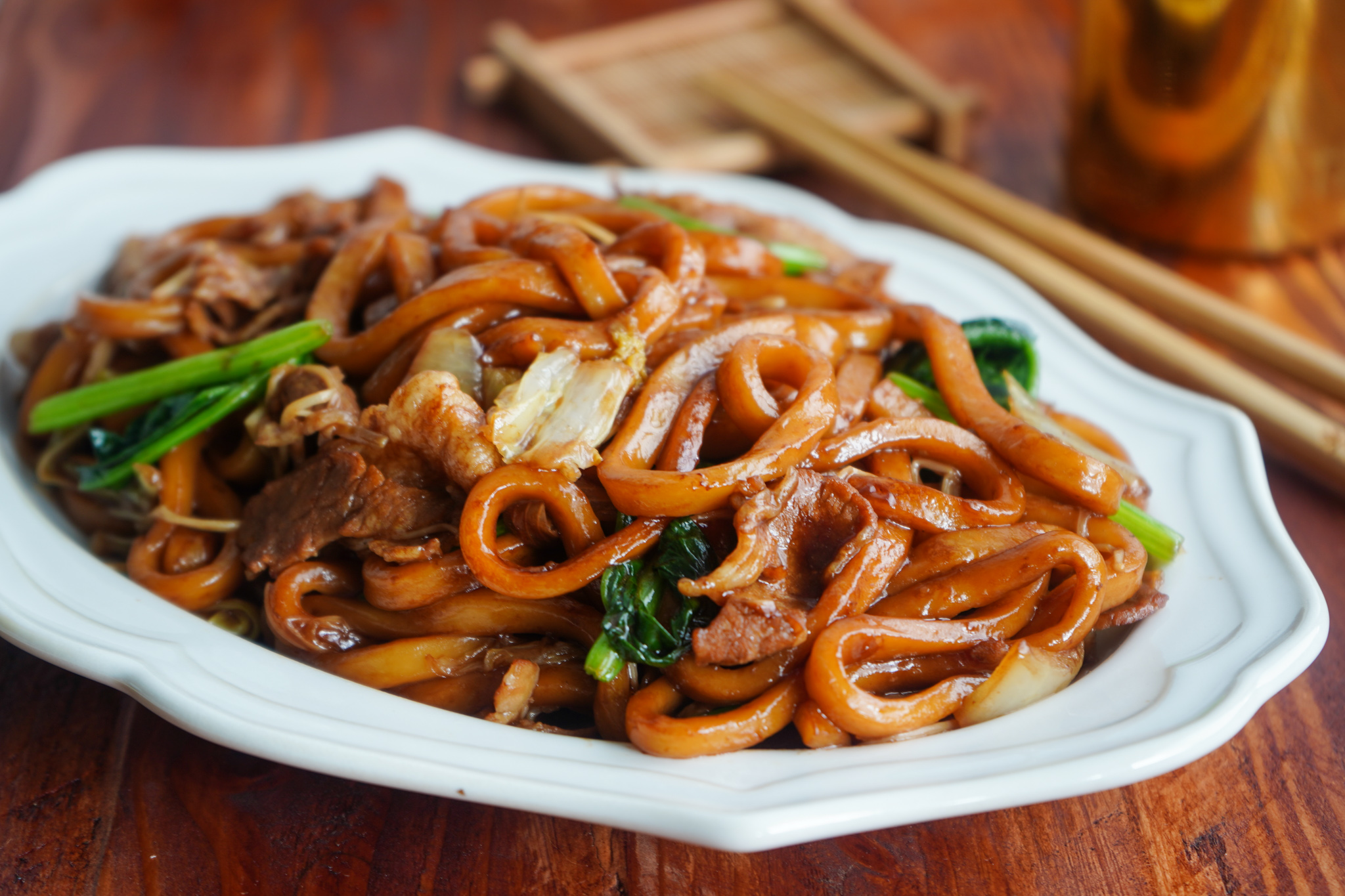How to Cook Shanghai Noodles a Full Guide
Noodles are one of the most prominent cuisines in China. One member of the noodle family is the Shanghai noodles. Shanghai noodles are considered a delicacy in China. The flavors blend, and the mouth-watering flavor is so satisfying that the whole world has become a fan of this dish.
So a question comes to mind that asks, What makes this so tasty and popular around the globe? The answer lies in its versatility. Although the traditional recipe usually calls for wheat flour noodles, you can also use other types of noodles as a substitute, such as spaghetti or Hokkien noodles. In this way, flavors and tastes can be extended to various types.
Introduction – Shanghai Noodles
One basic thing to follow while preparing Shanghai noodles is the perfect balance of ingredients and spices. Select the best source of protein to blend with your Shanghai noodles. Also, keep in mind to select the best vegetables that match well with your protein. The perfect duo of ginger and garlic plays a vital role in the taste and aroma of Shanghai noodles. It is advised to add them to your list of ingredients.
Now, it is time for you to get ready to dive deeper into the detailed recipe for Shanghai noodles. Take out your pan, flour, spices, vegetables, ingredients, and a full spoon of joy and excitement, as, without the fun, your art will not prosper enough.
The guide given below details all the important notes and guidelines for the preparation of Shanghai noodles:
1. Prepare the Shanghai Noodles:
- Boil the water. While boiling noodles, it is mandatory to keep track of the whole process.
- It is crucial for your noodles to not be too boiled or too soft. They should be boiled until al dente, meaning they still have a slight bite to them.
- Drain the noodles to let all the water molecules escape so you can properly stir-fry the noodles later on.
2. Prepare the Ingredients:
- If using meat, slice it against the grain into thin strips. This ensures that the meat remains tender after cooking.
- For shrimp, remove the shells and devein them if necessary.
- When slicing vegetables, aim for thin, even strips or julienne cuts. This helps the vegetables cook quickly and evenly.
- You can also pre-mix the minced garlic and grated ginger together for convenience.
3. Heat the Wok or skillet:
- Traditional carbon steel woks are ideal for stir-frying due to their high heat conductivity and ability to create a good sear. If using a skillet, choose one with a wide surface area to allow for even cooking.
- It should be hot enough that the oil shimmers and easily coats the pan.
4. Cook, the Protein:
- Be careful not to overcrowd the wok or skillet when stirring-frying the protein. This ensures that the heat is evenly distributed, allowing the protein to cook quickly and develop a nice sear.
- Stir-fry the protein until it’s no longer pink for chicken or beef or until the shrimp turns pink and opaque. Tofu should be stir-fried until it develops a golden-brown crust.
5. Stir-Fry the Vegetables – Shanghai Noodles
- Start with the harder vegetables that take longer to cook, such as carrots or bell peppers. Stir-fry them for a couple of minutes before adding the softer vegetables.
- Constantly toss and stir the vegetables to ensure they cook evenly and don’t become too soft. They should retain their crunch and vibrant color.
6. Combine Noodles and Sauce – Shanghai Noodles
- Push the vegetables to one side of the wok or skillet to make room for the noodles. The moisture released by the vegetables will prevent the noodles from becoming soggy when coated in sauce.
- Spread the sauce evenly over the noodles.
7. Add the Protein and Finish cooking – Shanghai Noodles
- Return the cooked protein to the wok or skillet with the noodles and vegetables. This ensures that the protein gets reheated and integrates with the other ingredients.
- Stir-fry for an additional 1-2 minutes to ensure that everything is heated through and well combined. This allows the flavors to meld together.
8. Serve and Garnish – Shanghai Noodles
- Give yourself a pat on the back and serve your noodles while inhaling the soothing aroma.
- Add chopped green onions to the top to add a fragrant and fresh touch.

Conclusion
There you have it! Now, you can call your guests and serve them this dish, which will force them to ask for one more plate. Shanghai noodles may sound like a daunting task to deal with considering their name, but after going through this blog, you will realize that the procedure is much easier and more joyful.
Go through this guide to make your dish as tasty as possible. There is no denying that every time we cook, a new flavor is achieved. Therefore, do not forget to alter the ingredients to soothe your tastebuds. You can also switch spices and sauces as per your choice.
Always keep in mind that although you can alter your ingredients and spices as per your taste, do not forget to maintain the measurements. The main flavor depends on the quantity of your spices and ingredients. You can also try to add more vegetables or spices to the seasoning.
Speaking about history in India, the noodles came around 2300 BC but were still not considered a delicacy as they are now. At present, noodles are available almost everywhere in India. They have become a delicacy for everyone. Shanghai noodles are now a bigger delicacy than regular noodles.
You are now familiar with Shanghai noodles and are one step away from calling your loved ones and sharing this delicacy. There is no doubt that you will fall in love with the enticing aroma and taste of this epic dish.
So what are you waiting for? Let your kitchen expand its resume and add this epic dish to your list of delicacies. You can overeat Shanghai noodles but cannot overboil them; otherwise, you would not want to eat even one bite.
The magic and epic flavor of this dish are not in its name but in your hands. Let your hands go on an adventure and prepare this dish. Discover your own flavors, try new additions, and make something new and unique. Just start and have your fill.
Go through the detailed tutorial above to make this recipe for Shanghai noodles, but do not forget to forge your own. The real taste is not in copying but in creating a new flavor. Do not forget to visit Shanghai to try this delicacy; the original flavor is always the best flavor. Bon appétit!







